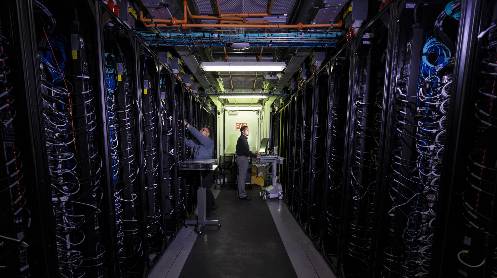Feb 4 (TechRepublic) – Researchers at the University of Waterloo, Canada, have discovered that data centres could slash energy consumption by up to 30% with a minor tweak—rewriting just 30 lines of code in the Linux kernel’s network stack. The study highlights inefficiencies in how servers handle incoming network traffic, paving the way for major energy savings.
Optimizing CPU Efficiency with Interrupt Request Suspension
The breakthrough hinges on interrupt request (IRQ) suspension, a technique that enhances CPU efficiency by reducing unnecessary disruptions during peak network traffic. Normally, when a data packet arrives, the system generates an interrupt request, forcing the CPU to halt its ongoing task and process the data—slowing operations and increasing energy use.
The revised code allows the system to actively check for new data packets when needed, rather than reacting to each interrupt. To prevent excessive power consumption, it automatically switches back to traditional IRQ handling during low-traffic periods. The result? A 45% boost in data throughput while keeping latency low. This modification has been integrated into Linux kernel version 6.13.
“We didn’t add anything,” said Professor Martin Karsten from the Cheriton School of Computer Science. “We just rearranged what is done and when, optimizing CPU cache usage. It’s like streamlining a manufacturing pipeline to reduce unnecessary movement.”
AI-Driven Energy Demand Puts Pressure on Data Centres
Data centres are expected to account for up to 4% of global electricity consumption by 2030, largely due to AI expansion. Training OpenAI’s GPT-4 alone required as much energy as 5,000 U.S. households use annually—excluding power for inference, the process of generating AI responses.
Despite mounting concerns, many data centre operators fail to track sustainability metrics such as renewable energy usage and water consumption. A report from the Uptime Institute found that fewer than half of data centre owners monitor key environmental data. Meanwhile, nearly 50% of businesses are relaxing sustainability targets to accommodate their AI expansion plans.
Even tech giants face scrutiny. In July, Google reported a 48% increase in carbon emissions over four years, driven by the rapid expansion of its AI infrastructure.
Call for Action: Sustainable Data Storage & Energy Efficiency
Experts warn that “dark data”—vast amounts of unstructured, unused digital information—is exacerbating energy waste. Professor Aoife Foley of Queen’s University Belfast stresses the need for aggressive power usage effectiveness (PUE) targets, sustainable data storage solutions, and reliance on greener energy sources.
“Sustainability must be integrated from design to operation,” Foley told TechRepublic. “This includes filtering dark data, removing redundant storage, and prioritizing environmentally responsible energy solutions.”
With AI and cloud computing driving data centre expansion, small efficiency improvements—like the Linux kernel update—could make a significant impact on energy conservation and environmental sustainability.





